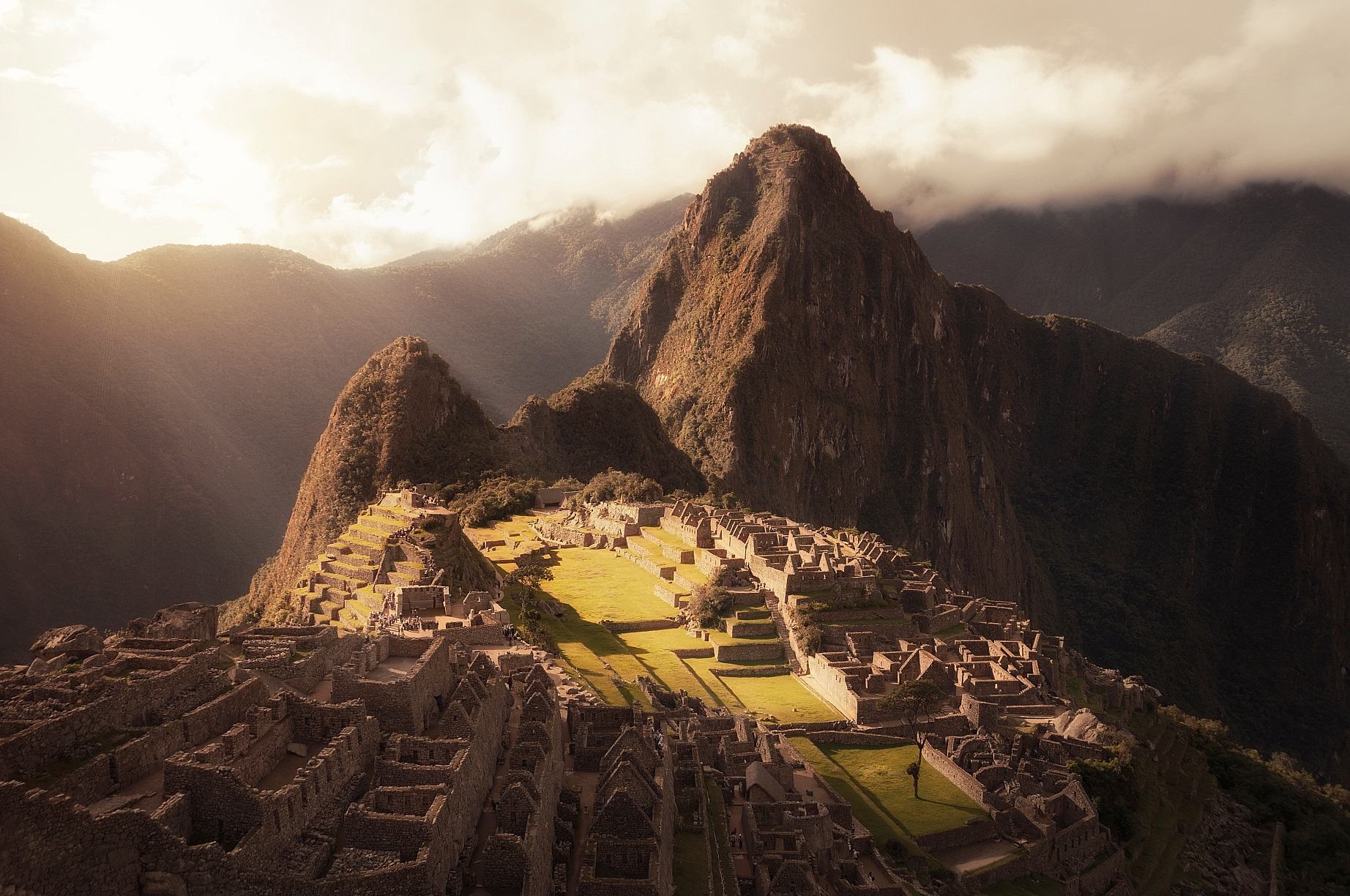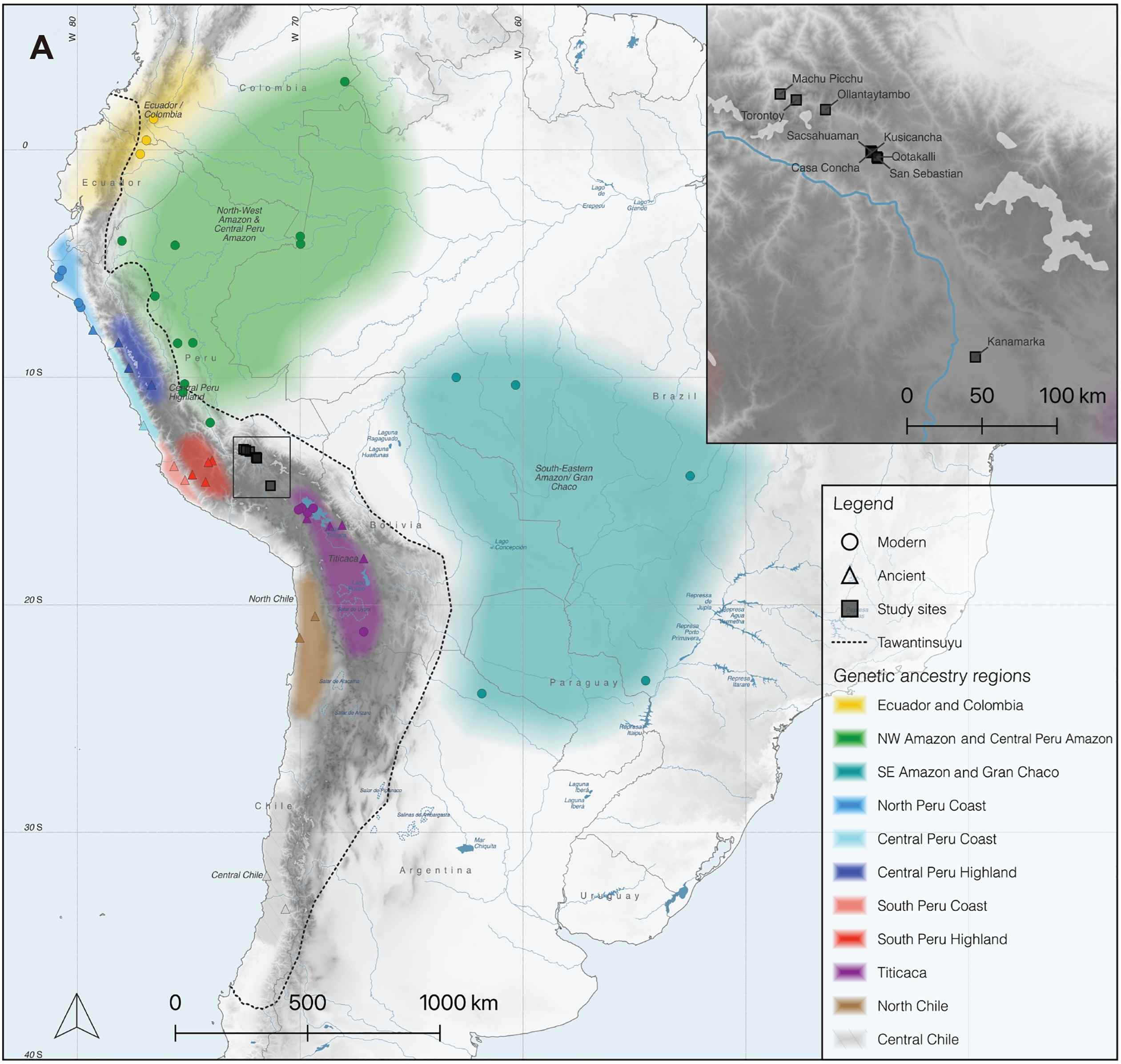At the summit of the southern highlands of Peru lies the 15th-century Machu Picchu – a renowned symbol of pre-colonial Latin American history and a popular tourist site. The citadel was once the majestic palace of an Inca emperor.

A global group of scientists has discovered the remarkable genetic variety lying within the historical remains of the occupants of Machu Picchu. Their findings have been reported in a recently released study published in Science Advances.
Inca diversity map

At its peak, the Inca Empire spanned an area of 2 million sq. km, stretching across the majestic Andes mountains in South America. It was founded in 1438 by the first Inca ruler Pachacuti Inca Yupanqui, and reached its zenith in 1533, prior to being colonised by the Spanish.
The Incan royalty and their entourage would come to Machu Picchu to celebrate, during the dry season, from May to October. They were laid to rest in Cusco upon death, however, the palace was kept up constantly by a handful of servants who were based there. These servants were buried in burial grounds located just beyond the palace walls.
In the wake of Spanish colonisation, Machu Picchu was forgotten by the Western world until it was stumbled upon by explorers in the early 1900s.
In 1912, the Yale Peruvian Scientific Expedition recorded a substantial number of 174 individuals buried at the site. These graves were often shallow or hidden under large stones or natural rocks.
Some human remains were found with ceramic artefacts, providing insight into the cultural variety of the area. These pieces of pottery came from the Peruvian coastline, northern Peru, and the Bolivian highlands near Lake Titicaca.
The initial sign that Machu Picchu attracted inhabitants from all over the Inca realm was this. It implied that the laborers who resided at Machu Picchu were from varied backgrounds, contributing pottery from their native regions.
It is possible that the artefacts in the area were brought in through trading. To discover the origin of these people, we must examine their DNA.
Research conducted on ancient DNA has yielded fresh discoveries
For our study, we extracted and sequenced ancient DNA from a total of 68 individuals, with 34 from Machu Picchu and 34 from Cusco. Through carbon dating, we determined the age of the remains and discovered that some of the people had been interred before the emergence of Pachacuti and the Inca empire.
We then compared the DNA of the Indigenous peoples living in the Andes today to past research which has shown that their genetic lines have been undisturbed for two thousand years, as well as to ancestries from other distant parts of South America.
It is important to consider that the ancestries determined by DNA may not always be in accordance with the cultural identities of the people, even though in some cases they would be.
Did the individuals interred at Machu Picchu exhibit any genetic similarities to those that occupied the region prior to Pachacuti’s rule? Or were there any connections to ancestries from other areas?
We can be certain that if the latter were accurate, then those people or their families had traveled from distant places to visit Machu Picchu.
Pursuing a lifetime of devotion to others
Our research on the DNA samples indicated that 17 individuals’ origins were from one of the remote areas that were analyzed (as indicated by the map). These regions ranged from the Peruvian coastline and highlands, to the Amazon regions in Peru, Ecuador, and Colombia.
Out of the seven buried people, only their ancestry had connections to Peru’s southern highlands where Machu Picchu and Cusco are situated. Nevertheless, we can’t be sure if they were from the Machu Picchu area.
13 people were found to have a mix of backgrounds, which included roots from both Brazil and Paraguay. It is possible that these individuals were descendants of people from different countries who had encountered each other at Machu Picchu. Additionally, it is feasible that they could be related to undiscovered South American ancestries. A single mother-daughter pair was the only close family relationship identified.
In an unexpected manner, everyone was interred in the same major cemeteries, disregarding their origin. This could indicate they had the same social standing, which might mean they were not native to Machu Picchu, but rather came there separately, forming ties and procreating.
It’s likely that a specific selection of women termed acllacona and a similarly chosen group of men known as yanacona were chosen for a unique purpose. These individuals were taken from their homes at an early age and set apart for life-long service to the state, aristocracy, or religion.
Upon reaching Machu Picchu, they would have dedicated the remainder of their days to the service of the royal manor.
Although it is uncertain if any form of force was utilized in the migration of people to Machu Picchu, the studies of their skeletal remains display that they had a good quality of life. Many of them lived to advanced years and showed no evidence of poor nutrition, sickness, or trauma from warfare or manual labor.
A Place of rich diversity
The discovery of human remains that came before the Inca empire revealed a lack of diversity. This implies that it was the founding of the Inca empire that brought people from far and wide to Machu Picchu.
We discovered that the population of Cusco had less diversity than those of Machu Picchu but more than other locations in the region. This is likely due to the extended highland region having a history of interaction between various populations prior to the emergence of the Inca rule.
Our analysis offers an entrancing representation of Machu Picchu as a remarkable focal point of variety within the Inca imperial region – distinguishing it as a culturally abundant nucleus within the antique environment.
The study was originally published in the journal Science Advances on July 26, 2023.




